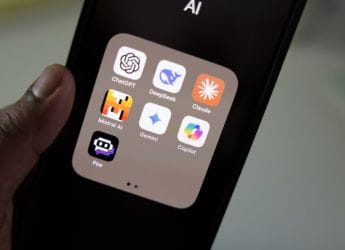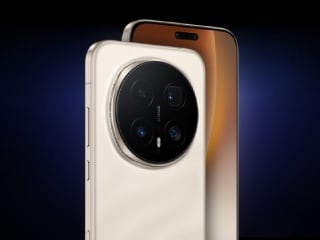- Home
- Audio
- Audio Reviews
- Dizo Wireless Power Neckband Bluetooth Earphones Review: Plain and Simple
Dizo Wireless Power Neckband Bluetooth Earphones Review: Plain and Simple
The Dizo Wireless Power works with the Realme Link app on Android.

The Dizo Wireless Power is priced at Rs. 1,399 in India
Dizo, an affordable audio and accessories brand backed by Realme, has been quite active in the last few months with new product launches. Among the company's more recent offerings is the Wireless Power neckband-style Bluetooth in-ear headset that promises some improvements over the Dizo Wireless, which was the first product from the brand in its category.
Priced at Rs. 1,399 in India, the Dizo Wireless Power is aimed at users looking for an affordable, good-looking pair of wireless earphones for everyday use. Is this the best wireless neckband-style headset you can buy for less than Rs. 1,500 right now? Find out in this review.
![]()
The Dizo Wireless Power works with the Realme Link app
Dizo Wireless Power design and features
There aren't many differences between the Dizo Wireless Power and the Dizo Wireless which launched in 2021, but a major change can be seen in the design. The new headset has what Dizo calls a ‘Power Hive' design, which is essentially a honeycomb-like pattern on the neckband. It does look good, but there's really not much else that stands out in this otherwise fairly ordinary-looking headset.
The earphones have a proper in-canal fit, with short cables running from the earpieces to the flexible neckband. The earpieces have a magnetic power switch, which turns the headset on when the earpieces are separated, and switches off when they are magnetically attached to each other. The right side of the neckband has a multi-function button for playback controls, a volume rocker button, and the USB Type-C port for charging.
I found the fit and comfort of the Dizo Wireless Power to be decent. However, as is the case with all headsets with magnetic power switches, the earpieces sometimes separated when in storage, thereby accidentally turning the headset on and automatically connecting to my smartphone.
The Dizo Wireless Power is IPX4 rated for water resistance, has environmental noise cancellation for a claimed better performance on calls, and has an 88ms low-latency gaming mode. The headset weighs 27.1g, and is available in three colours — Classic Black, Violet Blue, and Hunter Green. The sales package includes a charging cable and a total of three pairs of silicone ear tips for a customisable fit.
Dizo Wireless Power app and specifications
Thanks to Dizo's connection to Realme, the Dizo Wireless Power is compatible with the Realme Link app, although it's only limited to the Android app with this headset. Google Fast Pair is also supported, giving you the option to link the Dizo Wireless Power to your Google account when paired with an Android smartphone.
I've spoken about how good the Realme Link app is many times in past reviews and it's just as good with the Dizo Wireless Power too, save for a couple of bugs that I haven't experienced on any other devices that uses this app. The app shows the battery level of the headset, lets you switch between the three equaliser presets, activate Game mode, and customise the multi-function button controls.
![]()
The Dizo Wireless Power has 11.2mm dynamic drivers and Bluetooth 5.2 for connectivity
The latter can be set for playback, activating Game mode, invoking the voice assistant, and for switching between the last two paired source devices. While most of these worked well, I was strangely unable to invoke the voice assistant at all on my OnePlus 9 Pro (Review) smartphone. In fact, the app would automatically default the gesture's function to ‘None' when I tried to configure it.
There is also a Volume Enhancer toggle which boosts the volume level, and an Auto-answer toggle which automatically answers incoming calls when the earpieces are separated, while receiving a call. The volume enhancer made things louder as promised, but negatively affected the quality of the sound.
The Dizo Wireless Power has 11.2mm dynamic drivers, and uses Bluetooth 5.2 for connectivity. Only the SBC Bluetooth codec is supported on the headset.
Dizo Wireless Power performance and battery life
Affordable wireless headsets tend to be a bit basic when it comes to sound quality, but the Dizo Wireless Power doesn't quite meet the standards for products in its price range, in my opinion. Although it is practically the same as the Dizo Wireless, I found the sound quality on the Dizo Wireless Power to be disappointing even compared to its predecessor, which costs less.
Some of this can be down to the lack of the AAC Bluetooth codec support, but in general, I found the sound on the Dizo Wireless Power to be dull and rough. Listening to Freak by Skepsis, the powerful bass in this track felt a bit muddy and excessive, with an oddly unpleasant reverb in the sound that tended to drown out the mid-range and highs, which got fatiguing very quickly.
![]()
Controls for playback and volume, as well as the USB Type-C port for charging are on the right side of the neckband
This continued even in Opposite Ways by Brasstracks, which sounded strangely ‘piped'. The droning lows made it downright difficult to hear the vocals and saxophone riffs of this rap-based jazz track, entirely placing the focus on the wrong parts of the track. In all of this, the soundstage felt narrow and closed.
Overall, I found the sound unrefined and lacking in any real character beyond the obvious bump in the lows. Although it might seem like the bass is punchy, it's a tiring sound that will be hard to handle over long periods.
Call quality on the Dizo Wireless Power was acceptable indoors, and just about workable for short calls when outdoors. The low-latency mode on the earphones worked well on the Dizo Wireless, slightly improving the delay, but at a slight cost to sound quality. Connection stability was not a problem at all, and the earphones worked without any trouble at distances of up to 4m from the source device.
Battery life on the Dizo Wireless Power is the same as on the Dizo Wireless which is to say, quite ordinary even for the price. The earphones ran for around 10 hours on a single charge at moderate volume levels. There is fast charging which promises two hours of listening time with a 10-minute charge, while a full charge took around two hours to complete.
Verdict
Dizo's association to Realme gives it a big advantage when it comes to developing products as the features they offer, brand perception, and the aggressive pricing gives buyers a strong reason to give its products a second look. However, while many of its devices have been acceptable for the price, the Dizo Wireless Power falls disappointingly short.
Although it's quite affordable at Rs. 1,399, this headset offers no real compelling reasons to buy it beyond the design, fit, and app support since the sound quality simply isn't good enough. Although there aren't many neckband-style options I can recommend at under Rs. 1,500, I'd say it's worth spending a bit more and getting the OnePlus Bullets Wireless Z2 instead, which offers a much more refined and enjoyable listening experience, along with useful features such as fast charging and good battery life.
Get your daily dose of tech news, reviews, and insights, in under 80 characters on Gadgets 360 Turbo. Connect with fellow tech lovers on our Forum. Follow us on X, Facebook, WhatsApp, Threads and Google News for instant updates. Catch all the action on our YouTube channel.
Related Stories
- Samsung Galaxy Unpacked 2025
- ChatGPT
- Redmi Note 14 Pro+
- iPhone 16
- Apple Vision Pro
- Oneplus 12
- OnePlus Nord CE 3 Lite 5G
- iPhone 13
- Xiaomi 14 Pro
- Oppo Find N3
- Tecno Spark Go (2023)
- Realme V30
- Best Phones Under 25000
- Samsung Galaxy S24 Series
- Cryptocurrency
- iQoo 12
- Samsung Galaxy S24 Ultra
- Giottus
- Samsung Galaxy Z Flip 5
- Apple 'Scary Fast'
- Housefull 5
- GoPro Hero 12 Black Review
- Invincible Season 2
- JioGlass
- HD Ready TV
- Laptop Under 50000
- Smartwatch Under 10000
- Latest Mobile Phones
- Compare Phones
- Honor Win RT
- Honor Win
- Xiaomi 17 Ultra Leica Edition
- Xiaomi 17 Ultra
- Huawei Nova 15
- Huawei Nova 15 Pro
- Huawei Nova 15 Ultra
- OnePlus 15R
- Asus ProArt P16
- MacBook Pro 14-inch (M5, 2025)
- OPPO Pad Air 5
- Huawei MatePad 11.5 (2026)
- Xiaomi Watch 5
- Huawei Watch 10th Anniversary Edition
- Acerpure Nitro Z Series 100-inch QLED TV
- Samsung 43 Inch LED Ultra HD (4K) Smart TV (UA43UE81AFULXL)
- Asus ROG Ally
- Nintendo Switch Lite
- Haier 1.6 Ton 5 Star Inverter Split AC (HSU19G-MZAID5BN-INV)
- Haier 1.6 Ton 5 Star Inverter Split AC (HSU19G-MZAIM5BN-INV)


















